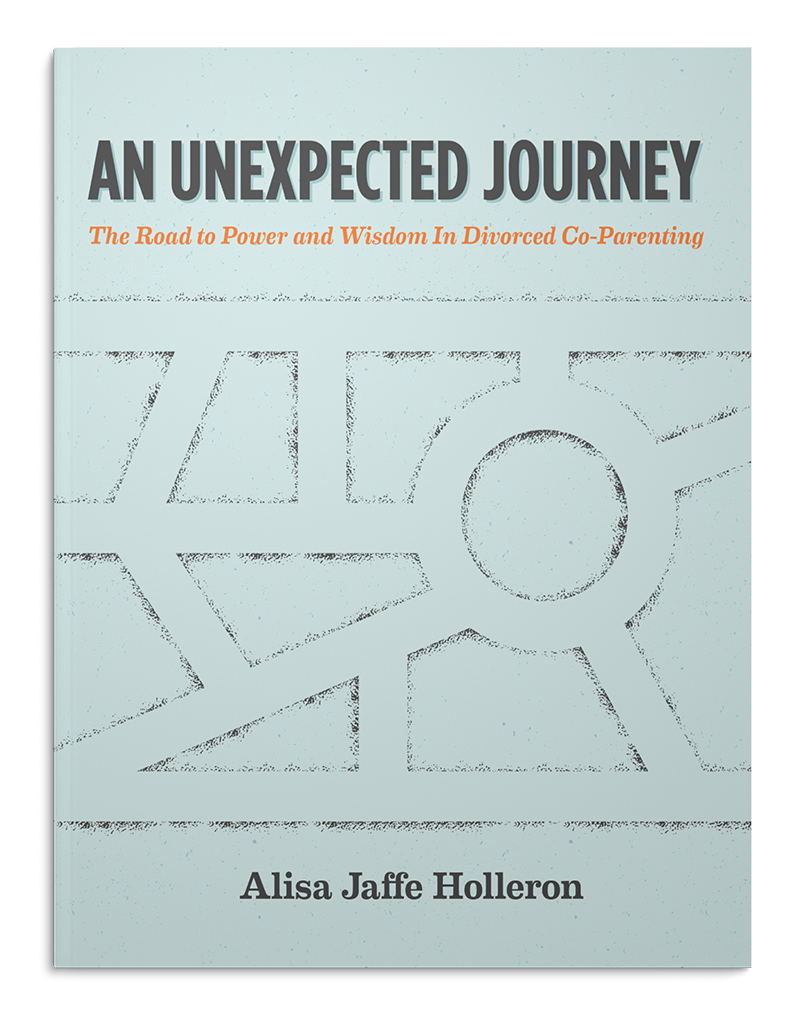I know firsthand that anxiety is painful and often downright unbearable. We try to get rid of it by, well, trying to get rid of it. Sounds like a good plan, but unfortunately, it doesn’t work. Instead of trying to get rid of it, a much better approach can be to actually welcome it. Sounds counter-intuitive, I know, but bear with me.
Anxiety is usually triggered by some external event. For example, your ex says that they are going to file to get custody of the kids, or a co-worker tells you that they heard you are going to get fired. Those are triggers. Powerful triggers like these can unleash a tornado of anxiety.
To understand anxiety better, it can be helpful to think of it as a character that enters our internal world. We don’t conjure it up or ask it to come, it just comes. Let’s call this character Anxiety. (How clever) Think of Anxiety as a really frantic person who rushes in saying things like: “Oh no, oh no! Things are really bad! Really bad! Really scary! We’ve got to do something! We’ve got to do something NOW!” Anxiety embeds itself into our bodies, creating uncomfortable, painful sensations. What we really hate about Anxiety is how it feels.
The problem is that Anxiety comes to warn us, to tell us something is wrong, but we hate how it feels so we try to push it away. Anxiety is a frantic but friendly character that actually cares deeply about us. It explodes onto the scene to protect us from what it considers to be a danger. Whether it is really a danger or not doesn’t matter, because Anxiety believes it.
Often, we try to convince Anxiety to go away using some kind of rational argument. We might say: “You know it really will all be fine. There’s nothing to worry about.” But Anxiety doesn’t feel comforted by that. It doesn’t believe that, which is why it is there to begin with. Think of it like this. A good friend bangs on your door and tells that you they see smoke coming out of an upstairs window. You push them out the door way and say “Go away!” What is your friend going to do? They are going to bang harder! Because they love you and want you to be safe, they are not going to get quiet until someone acknowledges that the house is on fire.
Another way we try to get Anxiety to go away is by trying to change whatever triggered Anxiety in the first place. The problem is that we allow Anxiety to be the one that takes action. Anxiety is not really good at taking effective action. Anxiety is a hysterical, frantic creature that is really good at getting our attention, but is not good at being grounded and thoughtful, and figuring out the best way to handle a potentially serious situation.
Now, there are some situations that Anxiety is good at handling, like REAL immediate crisis situations. If a toddler is running toward a busy street, we don’t want to take time to be thoughtful. We want a hysterical frantic creature running like hell after that toddler. But most of the situations that we respond to out of anxiety are not like that. Having your ex threaten to file for custody, or thinking you’re going to lose your job are not like that. In order to deal with these situations thoughtfully and calmly we need to have someone other than Anxiety running the show.
So what to do? The trick is to bring another character or another part of ourselves in to work with Anxiety. When Anxiety comes in, it is easy to be swallowed up by Anxiety, and think that Anxiety is all we are. But in truth, there are other parts of us present. Anxiety is just so loud that we forget the other ones are there. They are just taking a back seat, or hiding backstage. Behind the curtain, there is a wise part of us that knows what to do. We just have to find it. Let’s call this part Wise One. We all have wise parts that know what to do.
Wise One does not barge in and obliterate Anxiety. Wise One comes in and forms a relationship with Anxiety. It says, “Oh hello Anxiety I see you are here! You must have an important message for us, or you wouldn’t be here. Tell me Anxiety, what is it you have to say?” And then Wise One actually listens.
“I’m scared!” Anxiety screams hysterically. “I’m afraid my life will be ruined by this insane ex of mine.” or “I’m afraid I’m going to lose my job, and then I won’t be able to support my family!” Wise One, in a loving way says: “Anxiety, you are right, and I hear you. It is a scary thought, and nothing is impossible, so I am not going to insult you by telling you that what you are afraid of won’t happen.” Wise One goes on “Anxiety, you stay right here at my side, and continue to remind me that this situation is upsetting and scary. But I am going to handle it, and I will do the very best I can.”
In order to work with Anxiety effectively, two things need to happen. First, we need to get access to the higher functions of our brain, which is what Wise One is. When Anxiety comes, and we actually know this from brain imaging, the higher functions of our brain such as rationality and good judgment shut down.
There are many techniques for re-engaging the higher functions of our brain. Mindfulness is one powerful way. Mindfulness involves being aware of what you are experiencing. You become mindful first by bringing your attention to your breath and noticing what you are experiencing in the moment. When you are able to put yourself into a mindful state, you are now aware that Anxiety is there. The part of you that is aware that Anxiety is there IS NOT ANXIETY. This is powerful, because once you are aware that Anxiety is not all of who you are, you can find other parts of you like Wise One to step up and help out.
The second part of working effectively with anxiety is that we have to befriend it; we have to work with it, not against it. We have to get to know it, and know how to have a conversation with it that so it will calm down enough to let Wise One do its job. We have to appreciate it and see it as a friend.




5 Responses
You are a skillful and wise communicator! Thank you for sharing your wisdom with me and others with a curiosity of another way. With your permission I will share this with others. So well put.
Yes please share Kim, and thank you!
Thank you ” Wise One”! Well written and understood as always.
Thanks for your reading, and for your comment!
I happened upon this blog today after typing something I never expected I’d put into Google search bar – “How to deal with an emotionally reactive co-parent”.
I have been practicing this acceptance of anxiety and including it as part of my ‘working’ for a little while now, but it is reassuring to see this articulated. Recognising that it is normal to feel a heightened drive to act when my children are distressed, or when my former partner approaches me in an intensely emotional state has helped me to measure my response to best effect.
Although the alarm bell still goes off when I am confronted with an angry, “X happened and our son is never going back to school!”, new me can now take a deep breath, thank anxiety for pointing out the trigger points, and then take stock and reflect on a course of action that will reduce the level of anxiety for my son, give sufficient lead time for my co-parent to disengage from their initial emotional reaction, and work more efficiently towards a resolution to the situation at hand, driving things in the right direction, rather than jumping on the counterproductive mouse wheel of emotional responses.
This takes considerable work early on, especially on a background of coercive control, but it is genuinely empowering to focus on becoming a better co-parent, rather than centralising my thoughts on how these interactions feel in the moment.